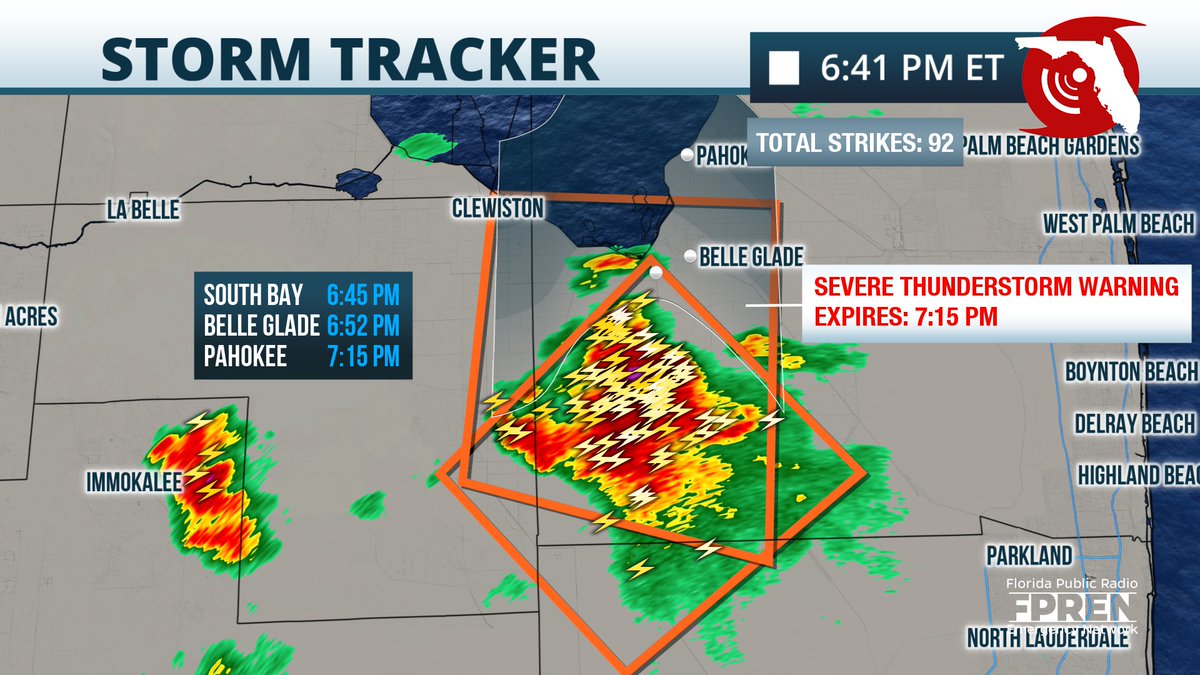Damaging Winds And Fast-Moving Storms: What To Watch For

Table of Contents
Recognizing the Signs of Approaching Damaging Winds and Fast-Moving Storms
Understanding Weather Forecasts and Warnings
Monitoring weather reports is paramount to staying safe. Pay close attention to severe weather alerts issued by your national meteorological service. Terms like "severe thunderstorm warning," "tornado watch," "tornado warning," and "high wind advisory" each signify a different level of threat.
- Interpreting Warning Levels: A watch indicates conditions are favorable for severe weather to develop; a warning means severe weather is imminent or occurring. Understand the difference!
- Utilizing Weather Resources: Use reputable weather apps (like AccuWeather, The Weather Channel) and websites (such as your national meteorological service's website) for up-to-date forecasts and warnings.
- Signing Up for Alerts: Enroll in your local emergency alert system to receive timely warnings directly to your phone or other device. This ensures you get immediate notification of severe weather in your area, including information on wind speed forecast and storm tracking updates.
Observing Visual Cues
Beyond official warnings, observing visual cues can provide vital early warning signs of approaching severe weather.
- Darkening Skies and Unusual Cloud Formations: A sudden and dramatic darkening of the sky, often accompanied by an eerie green tint, is a major warning sign. Look for unusual cloud formations, such as rotating clouds (indicative of a possible tornado) or wall clouds (a large, ominous, rotating cloud formation).
- Hail: The appearance of hail, even small hail, often precedes more severe weather, including damaging winds.
- Rapid Wind Shifts: A sudden and significant change in wind direction or speed, especially a noticeable increase, can signal the arrival of a strong storm. Understanding the significance of rapidly changing wind patterns is critical to understanding the immediacy of the threat.
Assessing the Potential Dangers of Damaging Winds and Fast-Moving Storms
Wind Damage
High winds pose significant dangers. The force of strong winds can cause:
- Downed Power Lines: These pose an electrocution risk.
- Falling Trees and Branches: These can cause serious injury or damage to property.
- Structural Damage to Buildings: High winds can damage roofs, windows, and even entire structures.
- Flying Debris: Loose objects, like signs, debris, and even parts of buildings, can become dangerous projectiles in high winds. Understanding the relationship between wind speed and potential damage is key to taking appropriate precautions. Even seemingly minor winds can cause significant damage when debris is involved.
Storm Surge and Flooding
Fast-moving storms, particularly those making landfall, can cause devastating storm surge and flooding, especially in coastal areas.
- Understanding Flood Warnings: Pay close attention to flood warnings and evacuation orders.
- Preparing for Potential Flooding: Move valuables to higher ground and have a plan for evacuation if necessary.
- Evacuation Procedures: Know your evacuation routes and have a designated meeting place for your family. Coastal flooding can happen quickly and unexpectedly, so preparedness is vital.
Safety Precautions During Damaging Winds and Fast-Moving Storms
Preparing Before a Storm
Proactive preparation is essential.
- Develop an Emergency Plan: Establish a communication plan with family members and identify safe shelter locations.
- Create a Go-Bag: Prepare an emergency kit with essential supplies like water, non-perishable food, flashlights, batteries, first-aid kit, and medications.
- Secure Loose Objects Outdoors: Bring anything that could become airborne (furniture, garbage cans, etc.) inside or securely tie it down.
Staying Safe During a Storm
When a severe weather warning is issued, take immediate action:
- Seek Shelter Immediately: Move to a sturdy interior room, preferably on the lowest level of your home, away from windows. A basement or interior hallway is ideal.
- Tornado Safety: If a tornado warning is issued, seek shelter immediately in a designated safe room or a sturdy interior location.
- Outdoor Safety: If you are caught outdoors, find immediate shelter in a sturdy building, a low-lying area, or a ditch. Never try to outrun a tornado or severe storm.
Conclusion
Damaging winds and fast-moving storms are powerful weather phenomena capable of causing significant destruction and injury. By understanding the signs of approaching storms, assessing the potential dangers, and taking appropriate safety precautions, you can significantly reduce your risk. Don't be caught off guard by strong winds and severe weather. Stay informed about severe weather forecasts, prepare an emergency plan, and ensure you and your loved ones understand the risks associated with damaging winds and fast-moving storms. Stay prepared and stay safe!

Featured Posts
-
 Preparing For A Wintry Mix Of Rain And Snow
May 20, 2025
Preparing For A Wintry Mix Of Rain And Snow
May 20, 2025 -
 Hmrc Website Failure Thousands Affected By System Crash In Uk
May 20, 2025
Hmrc Website Failure Thousands Affected By System Crash In Uk
May 20, 2025 -
 Diskvalifikatsiya Leklera I Khemiltona Analiz Gonki Ferrari
May 20, 2025
Diskvalifikatsiya Leklera I Khemiltona Analiz Gonki Ferrari
May 20, 2025 -
 Leclerc Speaks Out The Truth About The Ferrari Strategy And Hamilton
May 20, 2025
Leclerc Speaks Out The Truth About The Ferrari Strategy And Hamilton
May 20, 2025 -
 Mwafqt Alnwab Ela Mkhalfat Tqryry Dywan Almhasbt 2022 2023
May 20, 2025
Mwafqt Alnwab Ela Mkhalfat Tqryry Dywan Almhasbt 2022 2023
May 20, 2025
Latest Posts
-
 Uspesny Tim Home Office Kancelaria Alebo Kombinacia Obidvoch
May 20, 2025
Uspesny Tim Home Office Kancelaria Alebo Kombinacia Obidvoch
May 20, 2025 -
 Home Office Alebo Kancelaria Rozhodovanie Na Zaklade Potrieb Zamestnancov A Manazerov
May 20, 2025
Home Office Alebo Kancelaria Rozhodovanie Na Zaklade Potrieb Zamestnancov A Manazerov
May 20, 2025 -
 Vyber Idealneho Pracovneho Prostriedku Home Office Vs Kancelaria
May 20, 2025
Vyber Idealneho Pracovneho Prostriedku Home Office Vs Kancelaria
May 20, 2025 -
 How To Build A Billionaire Boys Empire Strategies For Young Entrepreneurs
May 20, 2025
How To Build A Billionaire Boys Empire Strategies For Young Entrepreneurs
May 20, 2025 -
 Preco 79 Manazerov Preferuje Osobny Kontakt Home Office Vs Klasicka Kancelaria
May 20, 2025
Preco 79 Manazerov Preferuje Osobny Kontakt Home Office Vs Klasicka Kancelaria
May 20, 2025
